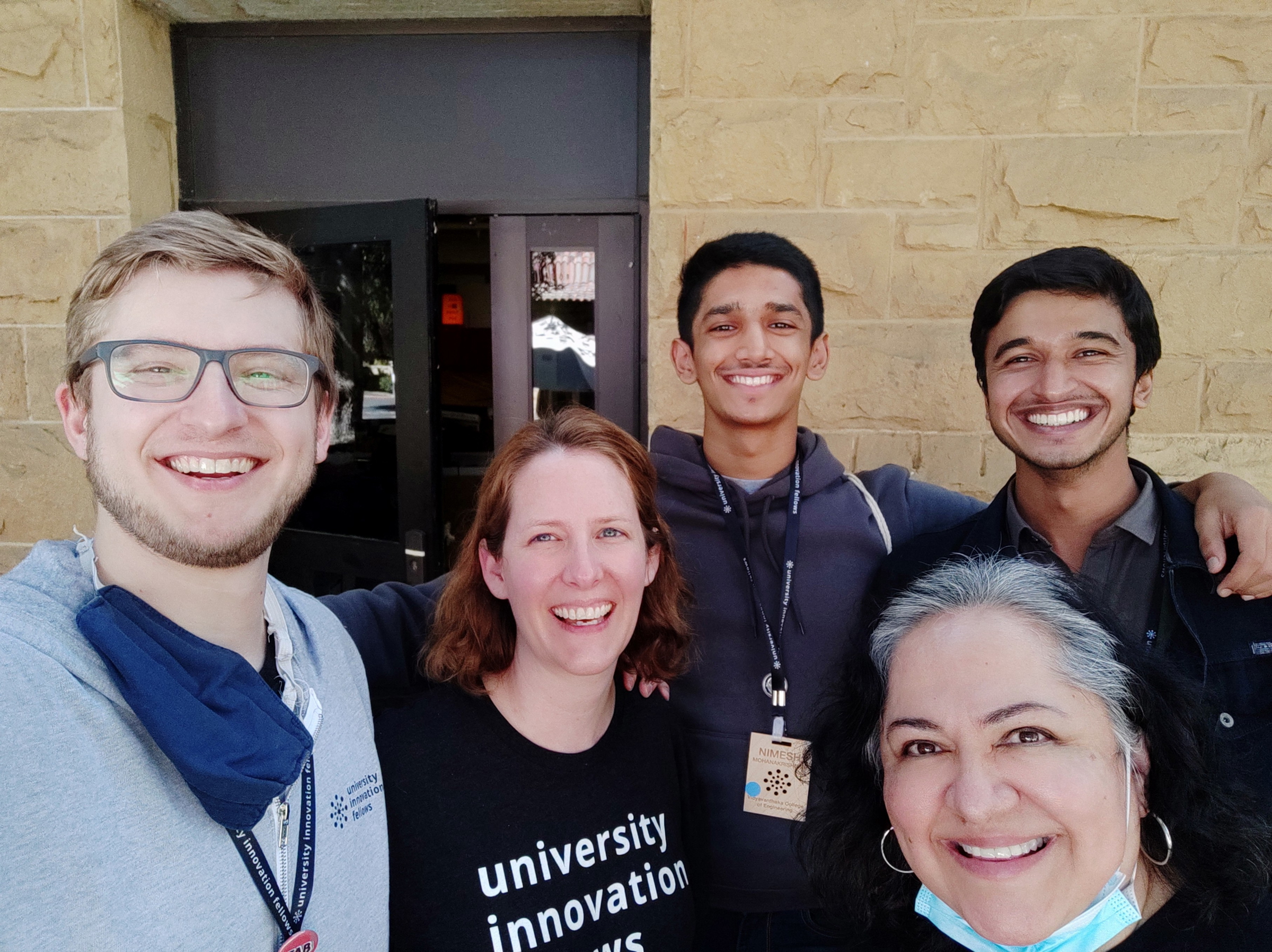What you are about to witness is a journey of a change agent who relentlessly worked hard to create a positive impact in his educational institution. The whole project is presented as a story covering the journey with deliverables and artifacts.
This is lengthy documentation with sufficient text descriptions and artifacts such as images, videos, and many more.
Have fun!
Design Thinking | Empathetic Service | Higher Education System
Empathy Matters...

Training Duration: 6 weeks
Project Duration: Until I finished my undergraduate studies
Employ design thinking to solve problems in the higher education system. Produce sustainable and equitable solutions.
University Innovation Fellows projects were conducted with a cohort of 4 members.

In this portfolio, I focus on presenting detailed information about what I did in each week of the program. Therefore, not entirely, you may find a continuous flow. However, you will read through the problem-solving process I learned and put it into use.
I'll start to uncover the projects as I explain what I did with my team in the course of 6 weeks and beyond.
"In a culture obsessed with measuring talent and ability, we often overlook the important role of inspiration. Inspiration awakens us to new possibilities by allowing us to transcend our ordinary experiences and limitations. Inspiration propels a person from apathy to possibility and transforms the way we perceive our own capabilities. Inspiration may sometimes be overlooked because of its elusive nature. Its history of being treated as supernatural or divine hasn't helped the situation. But as recent research shows, inspiration can be activated, captured, and manipulated, and it has a major effect on important life outcomes."
Kauffman, S. (2018). Why Inspiration Matters. [online] Harvard Business Review.
There are hundreds of students on our campus who are making a difference or working against the odds. They have identified something in their environment that ought to change, are unwilling to accept the status quo, and decided to do something about it. Maybe they started a new resource or organization. Perhaps they sparked a new initiative. It's possible, they still remain an unsung hero. My job this first week is to find them and tell their story.
Deliverable 1
In 2-3 paragraphs, tell the story of the student who inspires you.
I wrote about my senior - a mentor whom I admired the most in college.
"The space is incredible, but to see a shooting star amidst the incredible space is phenomenal. One such shooting star is Shashank Athreya. He is my senior in college and is a talented young lad who inspires me a lot. I've never met a senior who is talented as him and who has the ability to succeed in every walk of life. I got to know him in the early days of my first semester in college during the toastmaster's meet. I am fascinated to see a man who is full of beans(Energetic and lively).
Shashank exhibits strong leadership skills. He is the E-Cell leader of our college. I always see him working hard to promote the entrepreneurial club to a greater extent. It is not an easy task for a club to grow and be a part of the National Entrepreneurship Network. Entrepreneurial skills are important to acquire and it is especially important for the students to acquire it. With him as a leader, I can always be motivated and focused to contribute to the club's success and also motivate many other people too. He is an excellent communicator and an extrovert, which marks that he is a toastmaster. He is the former Vice President-Education of the Toastmasters club in our college and my mentor for giving speeches. I have observed an interesting point when he mentors me; he never objects my script, because he always tells me " Your words make you a different speaker that the world needs to see ". This kind of motivation always puts me back into the race and win the race.
Another quality that Shashank exhibits is the persistence. Besides studies and the coursework, he is dynamic and agile in co-curricular activities which involves students growth in extracurricular activities. He is the co-founder of Magna - a debate club, Former Vice Chair of ACM student chapter and Web developer in Open source lab. This is where I learnt something very important from him. In every walk of his life in the college, he knew something was missing and identified the missing piece. The missing piece was to bring a change to the education system to make it the best. This is when he started his UIF journey. I joined the leadership circle in the college and saw incredible insights to make education system a better place for all. His passion to bring a change that is needed, motivated me to join the team to do something great for the society. I am growing optimistic to make a change in my campus. Shashank derives inspiration from people. From this, I learnt that people around me can be the spark to help me grow."
Deliverable 2
When you shared your admiration for the person who inspires you, how did they respond? How did sharing this make you feel? Write a paragraph sharing their reaction and your feelings.
"Shashank was flattered when I presented the description of how he motivates me. I sent him the pictures of the description through a text and his exact words were "I'm flattered. I love it. Thank you!" The first point he expressed was that there were no grammatical imperfections. He felt very good after reading it. He thinks I went a little over the moon describing about him(On a good note). I felt great by telling him how he sets motivation in me to do something great. His response made me put a smile on my face. I am so glad that he felt happy reading it amidst his busy schedule."
Deliverable 3
Develop a plan for the stakeholder meeting, including the date, place, and invites to be issued.
Stakeholders, especially campus administration, may need to schedule meetings weeks in advance. Therefore, we started drafting a plan for the stakeholder meeting right from week 1.
The stakeholders meeting is essentially the meeting where we uncover the projects and ideas that we worked on, to the institutional stakeholders at the end of the training period.
MY LEARNINGS FROM WEEK 1
Before we begin to embark on a journey as change agents or problem-solvers it is important to get inspiration from people around us and make people feel good. It sets an optimistic motive for the journey ahead.
In week 2, we explored design thinking, a methodology for creative and human-centered problem solving that can empower us to collaborate across disciplines and tackle the world's enormous challenges. Changing the education system a really big challenge!
We started by watching the Extreme By Design documentary, which follows the journey of a group of students as they learn and apply design thinking to identify and solve problems in the developing.
Watch Extreme by design.
(Copyright Info: The original video is on Vimeo and is unavailable to everyone. I found this on YouTube for your reference.)
After being equipped with the right mindsets and tools to put design thinking into practice, the goal of this assignment is to identify opportunities to improve the experience of first-year students at the college and come up with potentially innovative solutions.
Deliverable 1
Interview and Synthesis
To start, we gathered 10 participants (first-year students) into an interview room and we started interviewing the participants individually. Each participant was isolated from the others. The interview duration was approximately 20 mins with each participant.
The seven golden rules I followed while taking interviews

The list of questions we prepared...
During the interview, we didn't ask all the questions because we directed our interview in an informal tone(more like a conversation)
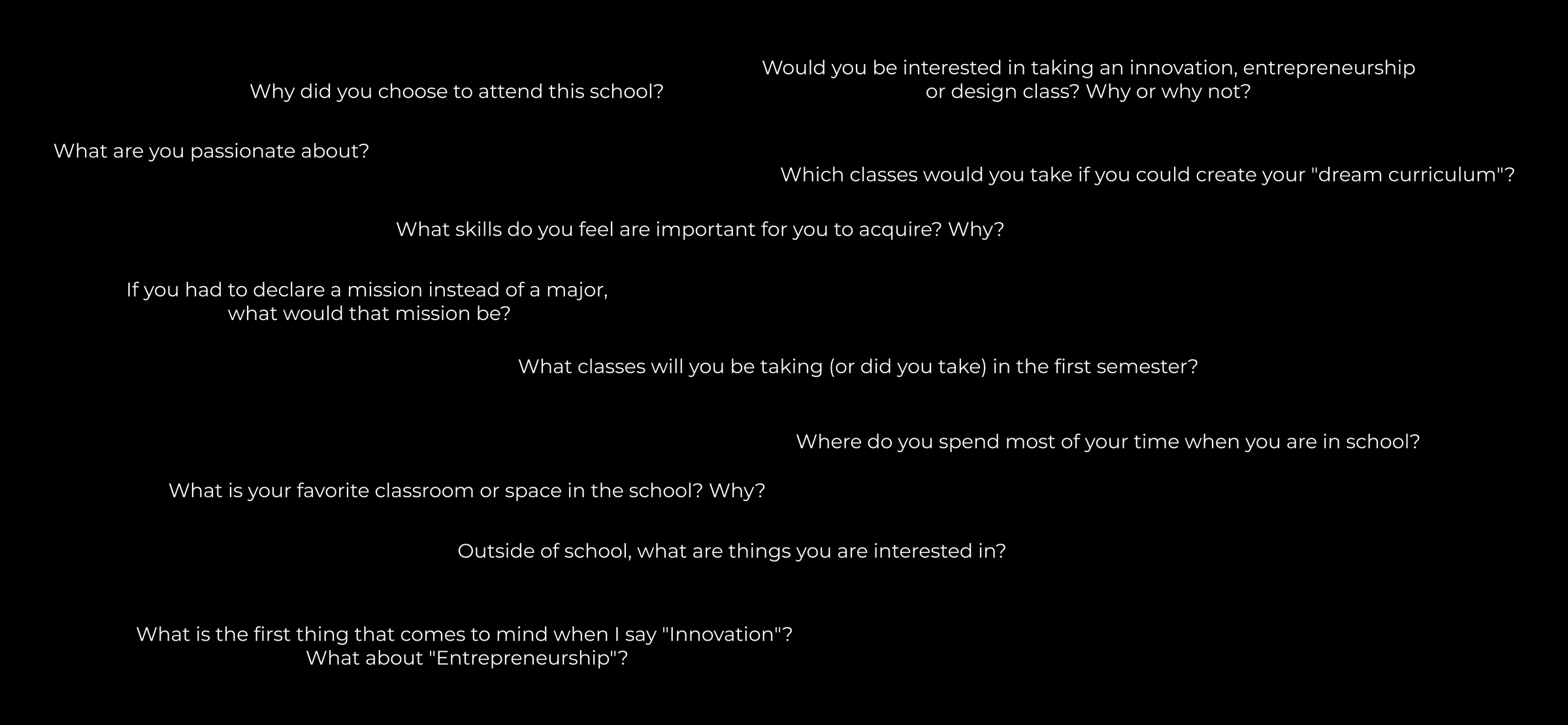
After the interviews, we unloaded the information from the notes in brief points onto digital sticky notes. The below information hides the personal information of the participants.
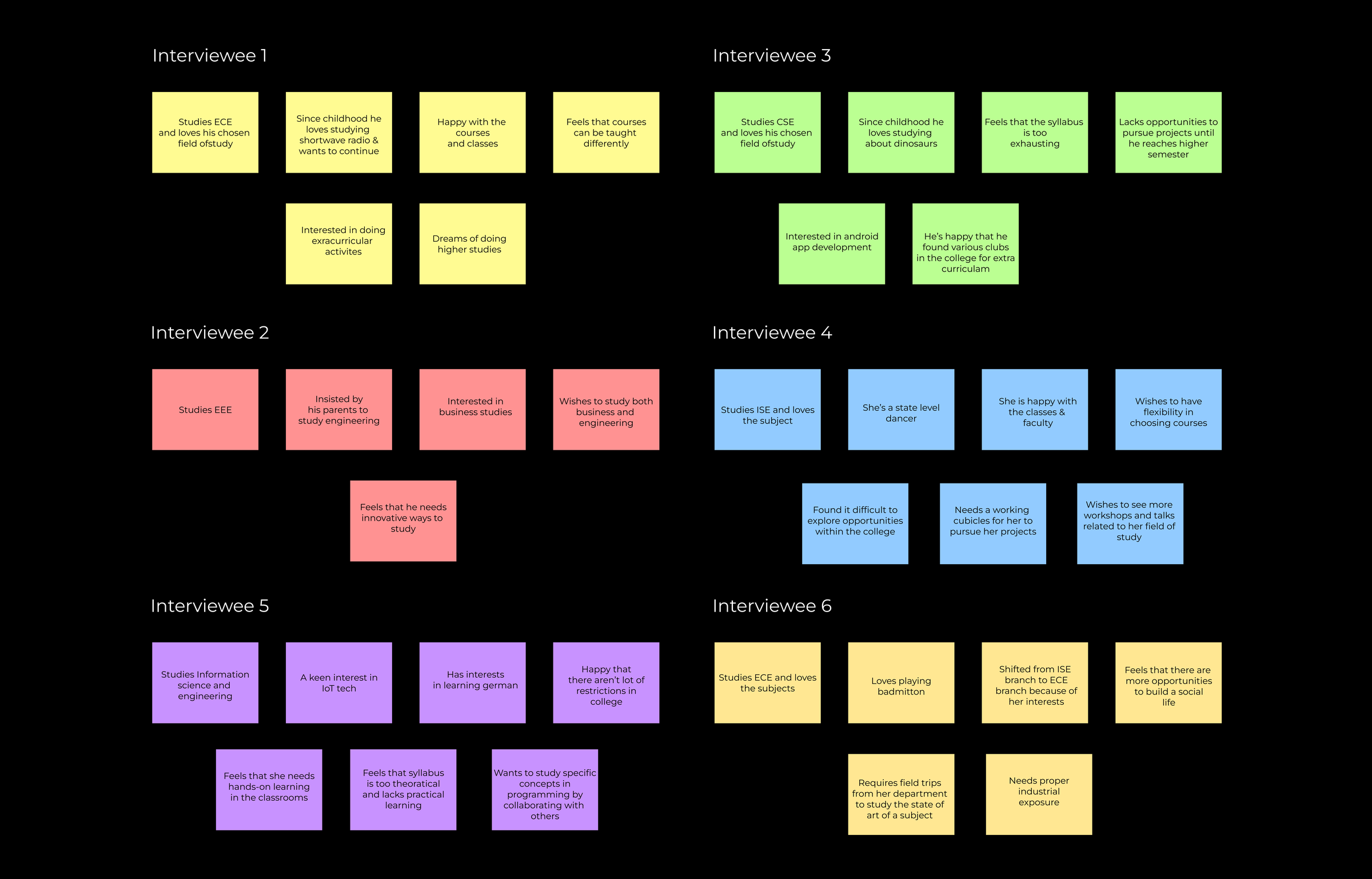
Synthesizing information
Of all the participants, we choose the information given by interviewee 5 as the basis for ideating solutions.
Note: We did not ignore information collated from other interviewees' interviews. We selected information shared by interviewee 5 to synthesize the information.
We spoke to Niharika, a first-year Information Science student who is extremely passionate about IoT.
During the interview, we were surprised to find out she enjoys hands-on experience with the devices and would work on it even in her free time. She would even use most of her free time to tinker with different gadgets.
We wonder if this means that the freshers would like a more practical and hands-on approach to learning. Would they learn and enjoy it more if they tried it out rather than just read about it?
How might we help students link theoretical and practical knowledge and provide a platform for them to apply the concepts they’ve learned practically?
Deliverable 2
Ideation!!!
Using the HMW question from deliverable 1, we started to ideate possible solutions for the opportunity. We followed the following guidelines for the successful brainstorming process:

The Ideas
We generated 30 possible ideas and shared them with the participants we interviewed.
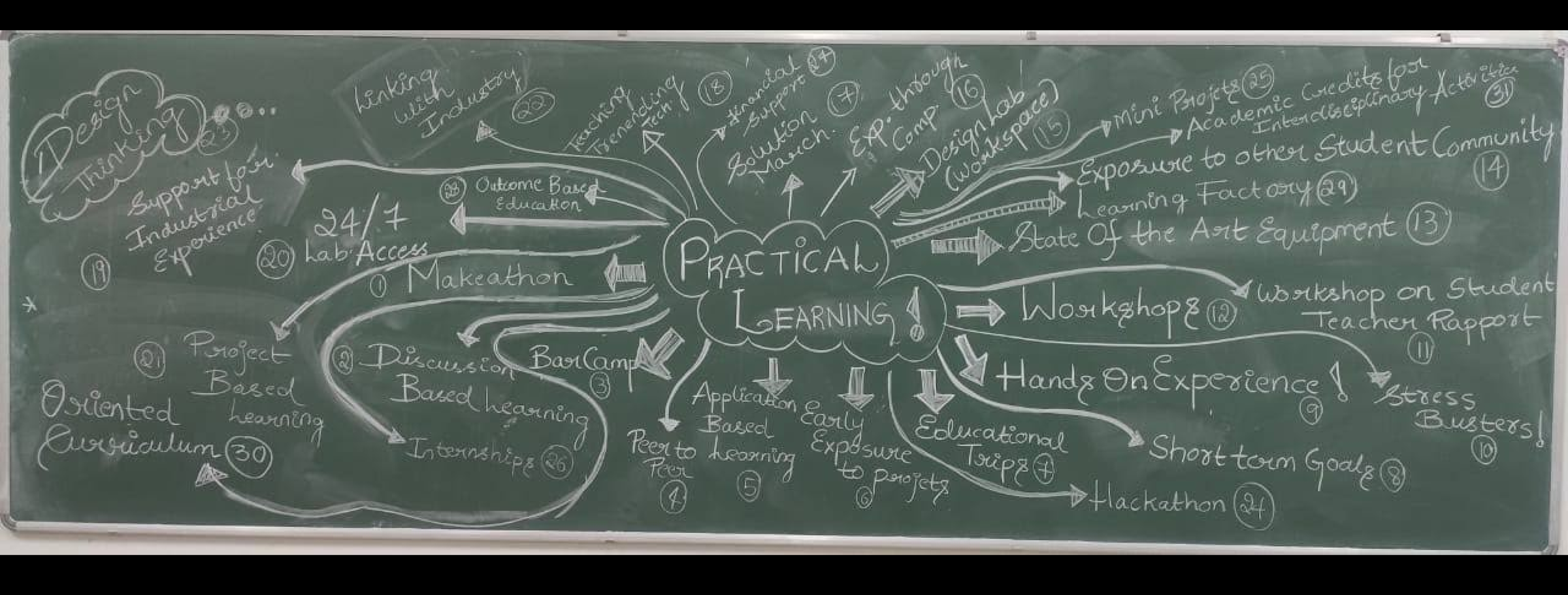

A sketch of our proposed idea (Paper prototype)
We selected a few ideas from the list of ideas we visually presented on the board and developed a paper prototype to present it to the students.

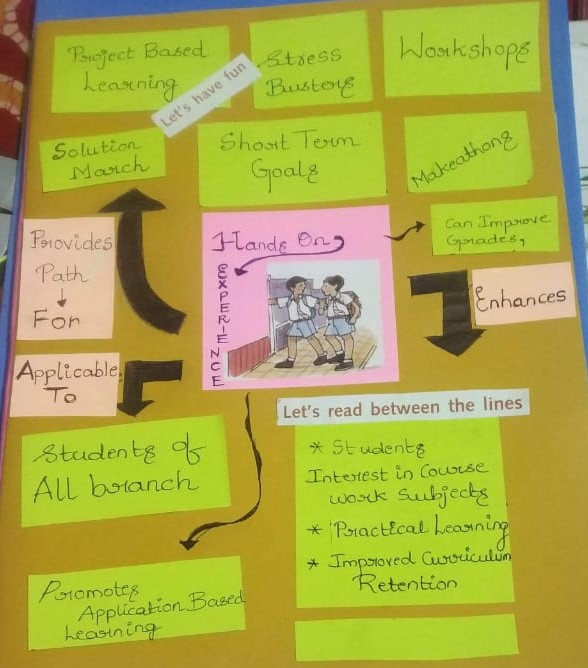
Feedback from the participants
The participants were surprised to see many innovative solutions framed in a short duration and felt happy. Many of them liked the solutions, while a few of them pointed out the inclusion of a few more ideas such as improving sports facilities in the college.
MY LEARNINGS FROM WEEK 2
Design thinking is not specific to one domain. It is universal and can be perceived and used in distinctive ways.
Crafting a good problem statement/question is a key starting point to generating innovative solutions.
When interviewing users/participants, be friendly and start the interview with a goal in mind.
Prototypes can be generated in multiple forms according to the context.
In week 3, we started researching strengths and gaps in the innovation and entrepreneurship ecosystem in our college. By doing so, we started to uncover a lot of opportunities existing in the college for I&E growth, and also the areas of improvement.
It is important to discover the I&E ecosystem in an institution because it may directly or indirectly affect the way the students shape their experiences on campus.
We had two goals in mind for landscape canvas...

The information we collected...
The one-week-long landscape canvassing allowed us to communicate in person with a lot of students, faculty, administrators, and various stakeholders. We collected sufficient information to synthesize and identify problems and gaps in innovation and entrepreneurship spaces on our campus.
Information on the left represents the main category, and the items displayed in the rectangle boxes represent our data's sub-categorial distribution.
Note: Because of confidentiality reasons, I cannot share the actual data in my portfolio. Although, if you want to learn more, feel free to contact me.
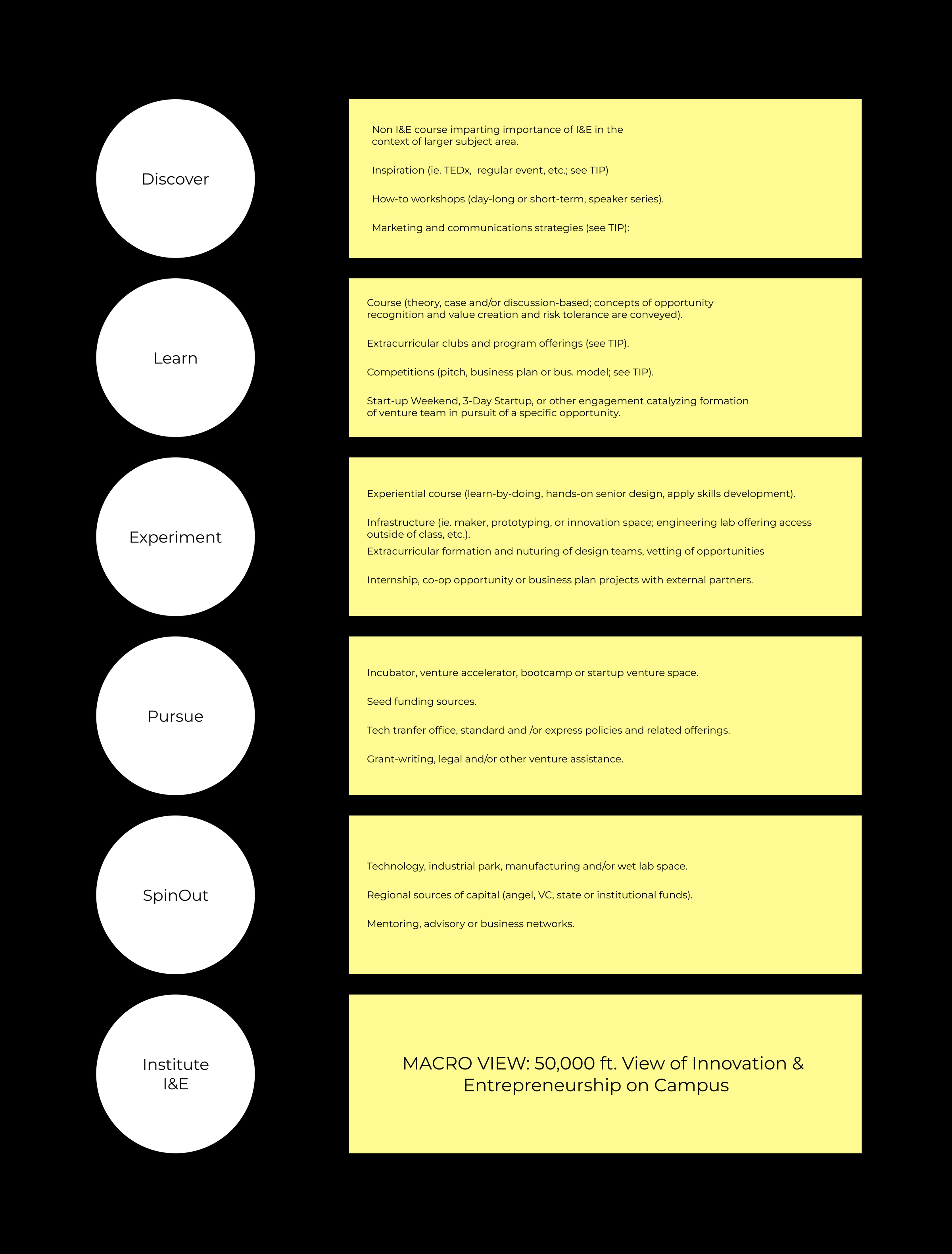
The gaps we identified gaps from our landscape canvas...
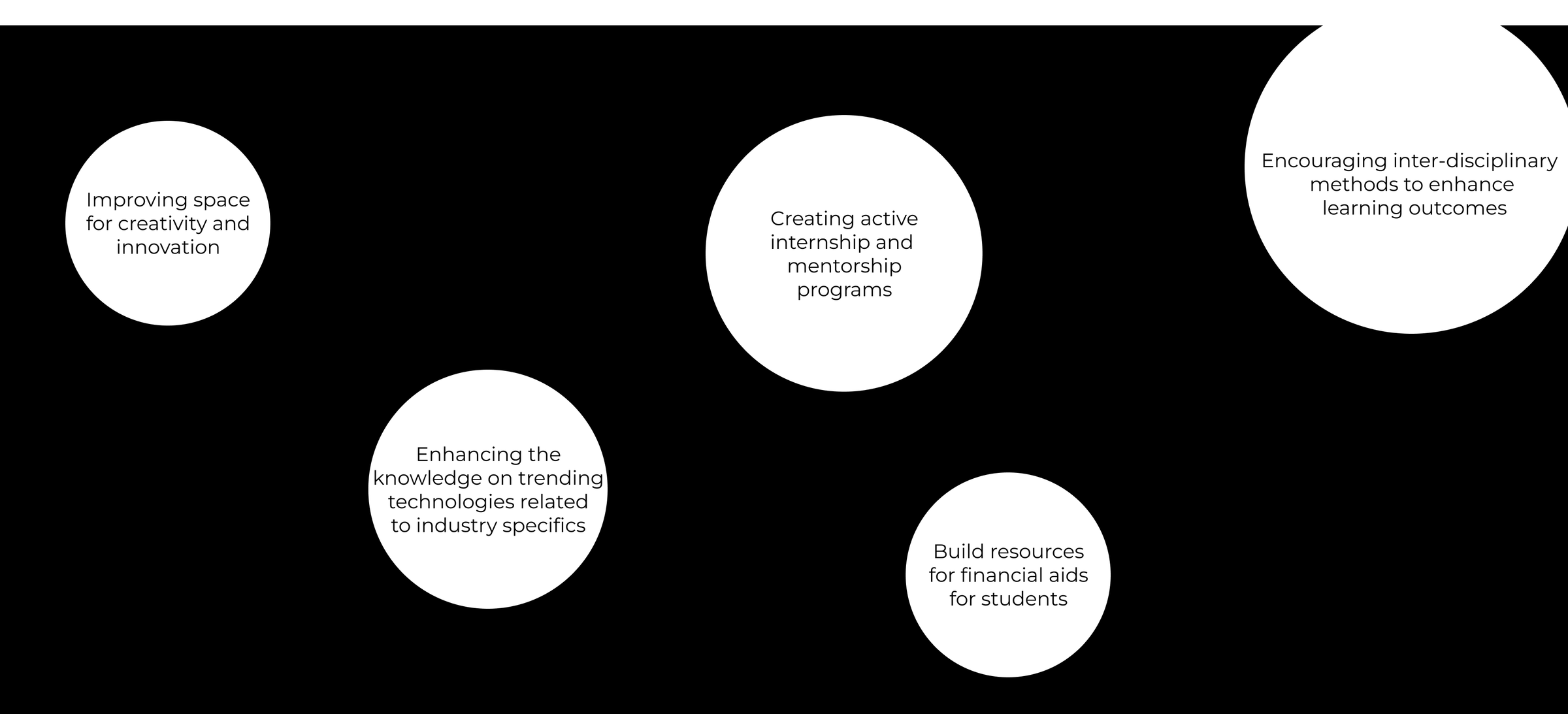
MY LEARNINGS FROM WEEK 3
To innovate and develop the I&E ecosystem in an educational institution, it is imperative to conduct a landscape survey and understand the existing resources or processes. These processes/resources may not be fully developed, and perhaps, we may have to focus on making them more effective. Or, we may have to innovate new ideas to tackle specific gaps in the higher education system.
After having spoken with lots of students, faculty, and administrators at our college and, through your Landscape Canvas research, we defined key gaps that point to opportunities to enrich the I&E ecosystem at our college.
Here, in week 4, we constructed strategic priorities and possible prototypes for the solutions to the gaps we identified as part of our landscape canvas research.
Note: From now on, I will only demonstrate the solutions/projects I worked. Of course, we worked together as a team. However, each of us took the responsibility of leading different projects inidividually.
MY LEARNINGS FROM WEEK 4
Strategic priorities define the sequential tasks required for accomplishing a solution/idea. It is essential to list the appropriate strategic priorities in problem-solving.
Initial Notion of Learn and Build: A unique concept that focuses mainly on experimental learning through scalable hands-on models. Students are taught basic concepts which prove to be a necessity for learning in their everyday life. These are concepts that are being learned in academics and made into models. This allows learning of core concepts along with their implementations, thereby ensuring a good foundation for them.
Conduct Design Thinking Workshop for faculty:
As students, we understand our fellow students. But can faculty and administrators connect in-depth and empathize with students? Few might, and few may not. Perhaps, it is because of their hectic schedule and they may need a student voice to inform them of the opportunities they can create in classrooms.
The lean startup concept reciprocates with the business models and establishments. In the context of changing strategies for an enhanced higher education ecosystem, we use lean start-up methodologies to innovate ideas and generate a change model canvas.
I interviewed 3 stakeholders on campus and discussed with them the change model canvas.
Note: I am only displaying artifacts from the consent I received from the stakeholders for the projects I was responsible.

In week 2, when we started exercising design thinking and trying to solve ideal problems, we ideated a lot of practical learning approaches that could be inculcated within the classroom setting.
We grabbed every idea from the list of ideas we had and then presented the same to the faculty after engaging them with a design thinking workshop.
Below are few snapshots from the design thinking workshop with the faculty and the artifacts they created from the workshop.

MY LEARNINGS FROM WEEK 5
One of the important tools one can utilize for effective creating sustainable solutions in the consideration of population segments and value propositions is the change model canvas, otherwise known as the business model canvas.
The last week of our training program was storytelling. This week, we learned the different story-telling methods to show and convince the stakeholders of the possible change we could create in our education ecosystem.
We created a short story video and presented the same during the stakeholder's meeting. Unfortunately, the video is removed for the time being. :( It'll be uploaded soon to this portfolio.
We invited various institutional stakeholders including the principal, faculty, HOD, Deans, and student leaders of different clubs.
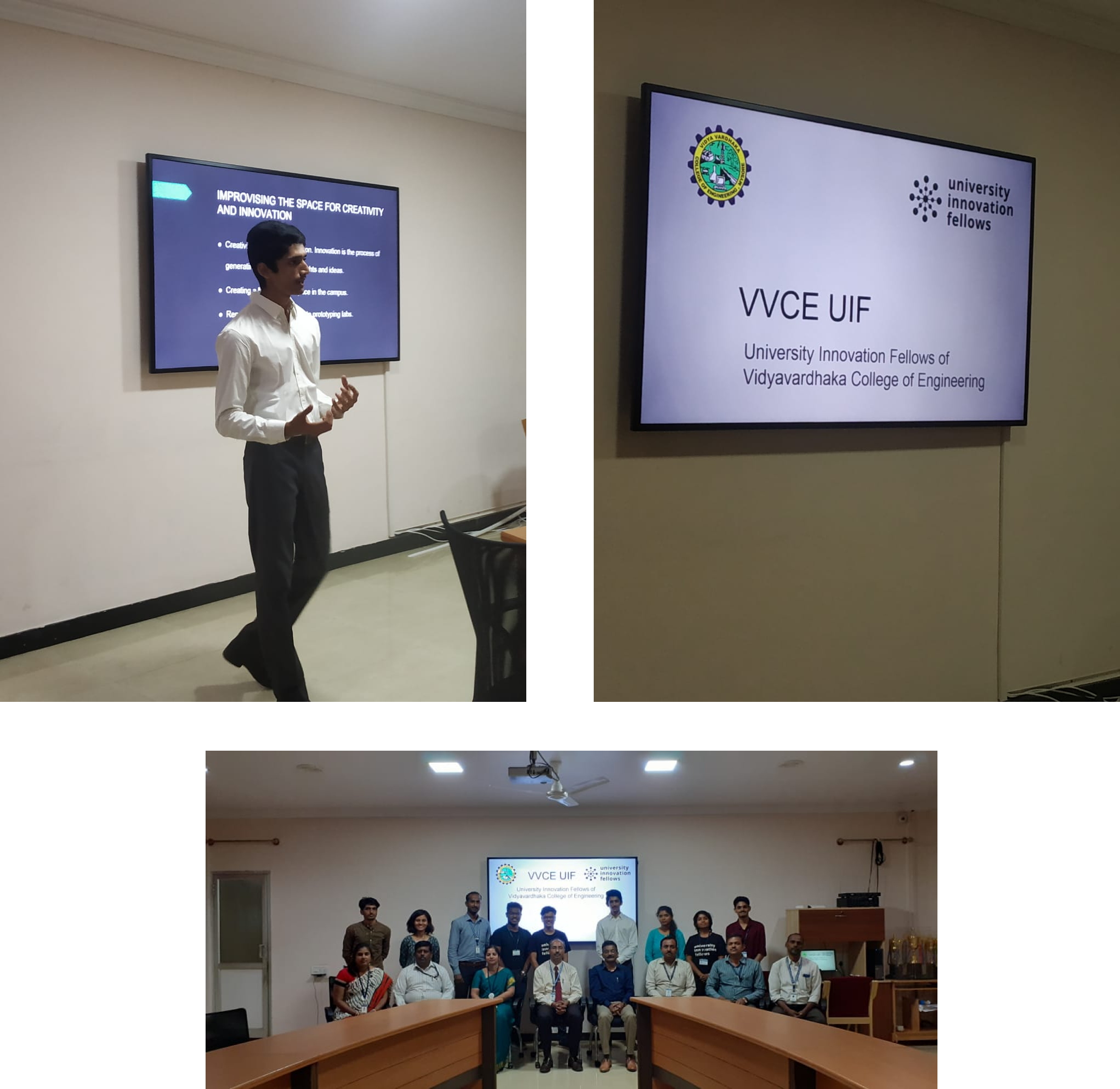
MY LEARNINGS FROM WEEK 5
When working as a change agent, it's important to share and tell a convincing story to the world of our mission and objectives.
There are numerous ways we can share a story. It depends on the context and the type of problem we try to solve.
After the training period, I still continued to work with my other fellows. One of the ideas I wanted to implement on my campus is the mobile maker space. Mobile maker space, especially for engineering students can be very beneficial to transform their ideas into testable prototypes. These mobile carts can be pushed anywhere within the campus and can also be used effectively during laboratory sessions.
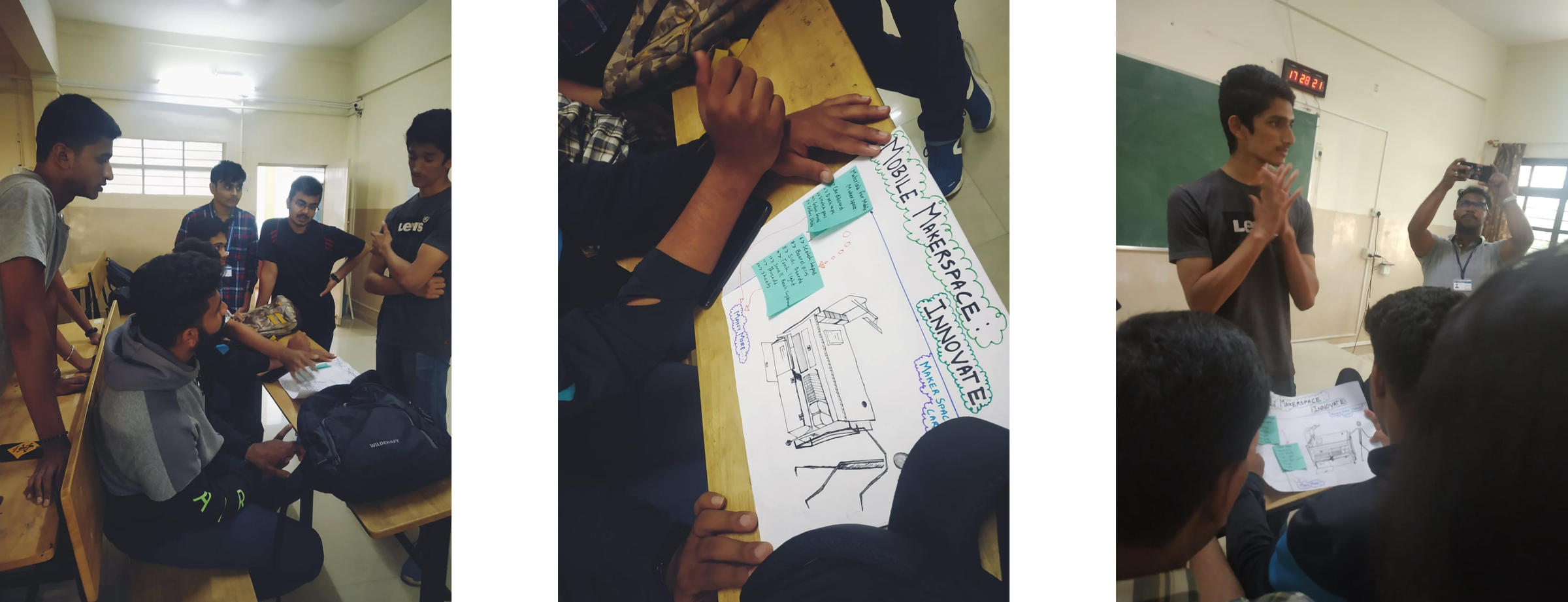
After, nearly, two and half years of wait, we attended the silicon valley meetup at Stanford University. I've collated my learning experience of the meetup in a medium pot. Please check this medium page to know more.
